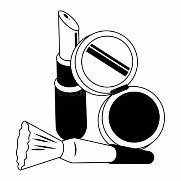What is PAC?
Poly aluminum chloride (PAC) is a water treatment chemical used as a coagulant to extract and agglomerate contaminants in water. It is an acidic solution consisting of the aluminum, chlorine, hydrogen and oxygen. PAC is also known as PAX, poly aluminum hydroxide chloride sulfate solution or PACS. PAC is a new concept coagulant whose specific properties originate from the action of its basic active ingredient, namely poly aluminum chloride. PAC is supplied as an aqueous solution or powder, facilitating transport and storage operations as well as subsequent reagent dosing.
PAC characteristics
Poly aluminum chloride (PAC) has the following characteristics:

- PAC is pale to slightly yellow in color.
- PAC is characterized by the degree of basicization, which determines the polymer content and the product's effectiveness in clarifying aqueous products.
- PAC hydrolyzes more easily, achieves better coagulation, and quickly forms clumps, making it a much more effective product.
- PAC has a lower aluminum content, so leaves much less aluminum residue.
PAC applications
Poly aluminum chloride (PAC) has various applications in different fields. Some common applications of PAC are:

Water treatment
PAC is used in the water treatment industry as a coagulant to remove impurities from contaminated water. It is used for drinking water treatment, swimming pool water, wastewater treatment, wastewater treatment and industrial wastewater.

Paper industry
PAC is used in the paper industry as a retention agent to improve filler and fiber retention during the papermaking process.

Cosmetics
PAC is used in cosmetics as an astringent and antibacterial. It can temporarily shrink pore size and tighten skin.

Textile industry
PAC is used in the textile industry as a mordant to improve the color fastness of dyes.
Other applications
PAC is used in the production of cleaning and personal care products such as deodorants and as a coagulant in water filtration plants to adsorb suspended particles in water.


